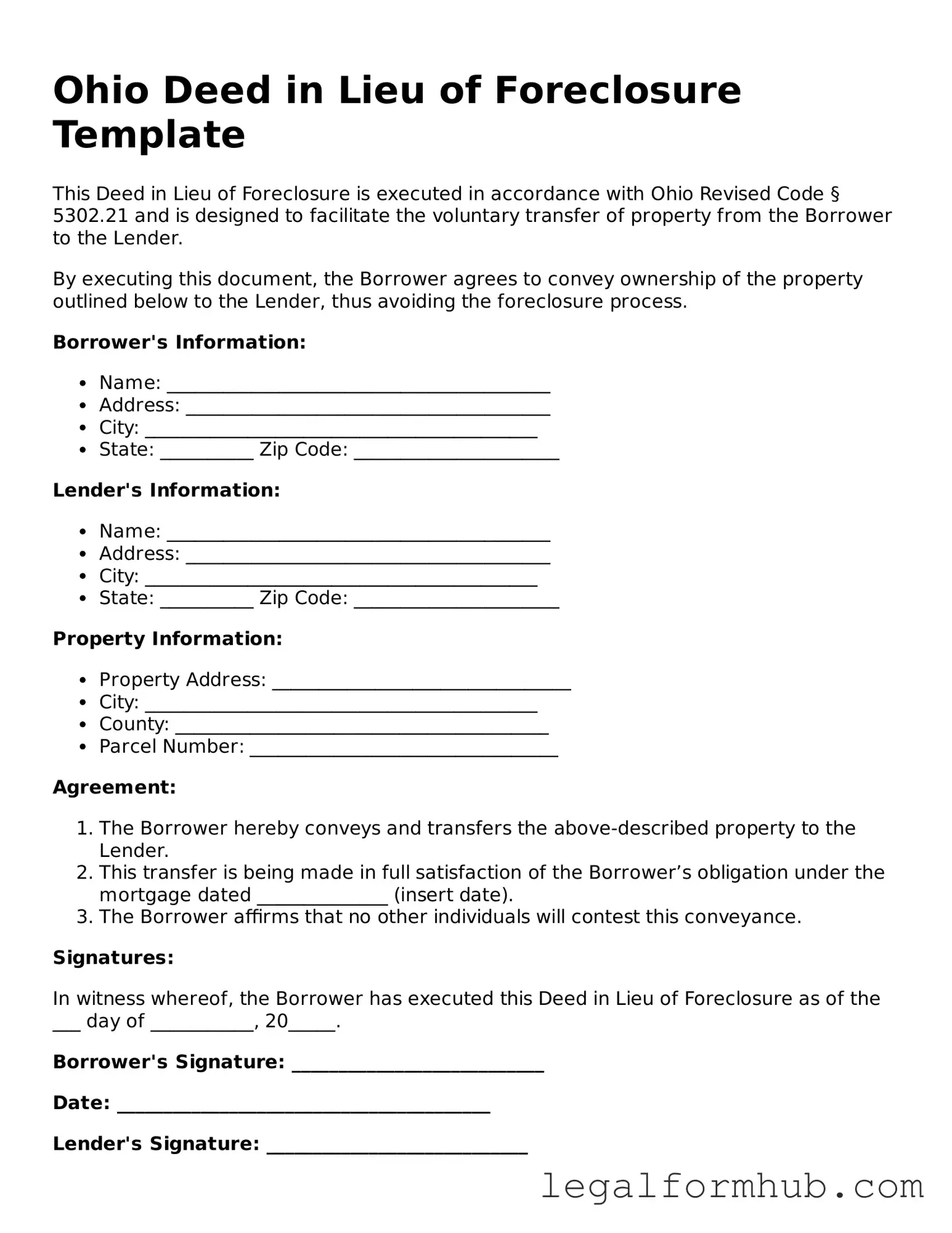A mortgage release is similar to a deed in lieu of foreclosure in that it allows a borrower to relinquish their property back to the lender. In this case, the lender agrees to release the borrower from the mortgage obligation, effectively canceling the debt. This process can be less damaging to the borrower’s credit than a foreclosure, as it indicates a mutual agreement rather than a court-ordered seizure of property.
A short sale is another document that shares similarities with a deed in lieu of foreclosure. In a short sale, the homeowner sells the property for less than the amount owed on the mortgage. The lender must agree to accept the lower amount, which allows the homeowner to avoid foreclosure. Like a deed in lieu, a short sale can help minimize the impact on the borrower’s credit score.
A loan modification agreement can also be compared to a deed in lieu of foreclosure. This document outlines changes to the original loan terms, such as interest rates or payment schedules, to make it more manageable for the borrower. While a deed in lieu involves giving up the property, a loan modification aims to help the homeowner keep their home by making the mortgage more affordable.
A forbearance agreement is another related document. This agreement allows a borrower to temporarily pause or reduce their mortgage payments without losing their home. While a deed in lieu results in the transfer of property ownership, forbearance offers a way for the borrower to retain their property while they recover financially.
A foreclosure notice is also relevant in this context. It is a legal document that informs a borrower that the lender intends to initiate foreclosure proceedings due to missed payments. While a deed in lieu is a proactive measure taken by the borrower to avoid foreclosure, a foreclosure notice represents the lender’s response to the borrower’s default.
A quitclaim deed is similar in that it transfers ownership of property but does not necessarily involve the lender's agreement. In a quitclaim deed, the current owner relinquishes any claim to the property, which can lead to complications if there are existing liens or mortgages. In contrast, a deed in lieu of foreclosure specifically addresses the mortgage obligation and is typically agreed upon by both parties.
An assumption agreement can also be compared to a deed in lieu of foreclosure. This document allows a new buyer to take over the existing mortgage of the seller. While a deed in lieu involves the borrower giving up the property, an assumption agreement enables the borrower to transfer their mortgage responsibility to another party, potentially avoiding foreclosure.
A property settlement agreement is another relevant document. This is often used in divorce cases to divide property and debts between spouses. While a deed in lieu of foreclosure focuses on the lender-borrower relationship, a property settlement agreement addresses the division of assets, which may include real estate. Both documents aim to resolve financial obligations but in different contexts.
To simplify the process of transferring ownership of pets, it is essential to understand the importance of proper documentation. For those needing assistance in creating legal documents, you can visit Fill PDF Forms to access the necessary forms that help facilitate a smooth exchange of pet ownership, ensuring both parties' rights are protected during the transaction.
Lastly, a bankruptcy filing can be compared to a deed in lieu of foreclosure. Filing for bankruptcy can halt foreclosure proceedings and provide the borrower with a fresh start. While a deed in lieu is a voluntary transfer of property to avoid foreclosure, bankruptcy is a legal process that can discharge debts, including mortgage obligations, but may also lead to the loss of the property.
